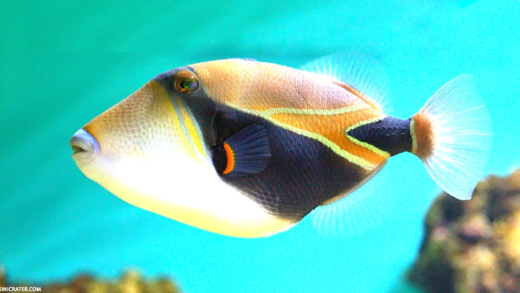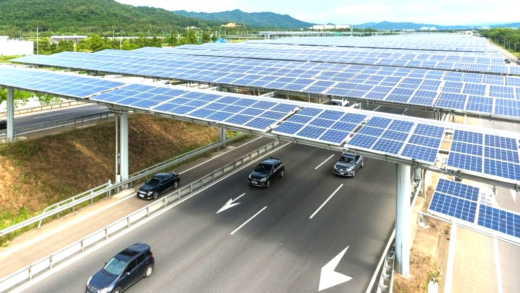Gorilla Glass has evolved through various generations, improving in durability and performance. Innovations like anti-microbial coatings and the latest version, Gorilla Glass Victus, enhance user experience. When compared to other protective glasses, Gorilla Glass offers a unique balance of lightweight durability and clarity. Rigorous real-world tests confirm its effectiveness against scratches and impacts, making it a top choice for modern devices.
What is Gorilla Glass?
Gorilla Glass is a specialized toughened glass developed by Corning Incorporated. Its primary purpose is to provide a protective layer for various electronic devices, particularly smartphones and tablets. This glass is engineered to withstand the rigors of daily use, reducing the likelihood of scratches and breakage. The invention of Gorilla Glass marked a significant advancement in screen technology, addressing the common issues faced by users of traditional glass.
Differences Between Gorilla Glass and Regular Glass
When comparing Gorilla Glass to standard glass, several key differences emerge. First, Gorilla Glass is significantly more resistant to scratches and impacts. Regular glass, while clear and aesthetically pleasing, is far more fragile and prone to shattering when dropped. Here are some notable distinctions:
- Durability: Gorilla Glass is designed to endure everyday wear and tear, whereas regular glass can break easily.
- Weight: Gorilla Glass is lightweight, making devices easier to handle compared to heavier alternatives.
- Clarity: Despite its toughness, Gorilla Glass maintains optical clarity, ensuring an excellent viewing experience.
These differences make Gorilla Glass a superior choice for modern devices.
Materials Used in Gorilla Glass
The strength of Gorilla Glass comes from its unique composition. It is made from alkali-aluminosilicate glass, which is chemically strengthened to enhance durability. The materials involved include:
- Sodium: Reduces the viscosity of the glass, allowing for smoother processing.
- Alumina: Increases hardness and chemical resistance.
- Silica: Provides transparency and contributes to the glass structure.
This combination of materials results in a robust glass capable of withstanding drops and scratches.
Manufacturing Process of Gorilla Glass
The manufacturing process of Gorilla Glass is intricate, involving several critical steps. Initially, raw materials are melted at high temperatures to create a molten glass. Then, the glass is formed into sheets through a process called “float glass” production. Following this, the glass undergoes chemical strengthening, which enhances its durability by introducing sodium and potassium ions. This process is essential in creating the signature toughness of Gorilla Glass. After this, the glass is cut, polished, and inspected for quality before being sent out for use in devices.
Chemical Composition of Gorilla Glass
Chemical composition plays a crucial role in the strength of Gorilla Glass. Primarily, it consists of alkali-aluminosilicate, which is a special type of glass that undergoes a chemical strengthening process. This process involves exchanging smaller sodium ions in the glass with larger potassium ions. The larger ions create a compressive stress layer on the surface of the glass, enhancing its resistance to scratches and impacts. The main chemical components include:
- Sodium Oxide (Na2O): Reduces melting temperature and viscosity.
- Alumina (Al2O3): Enhances hardness and provides thermal stability.
- Silica (SiO2): Essential for transparency and structural integrity.
- Potassium Oxide (K2O): Increases durability through ion exchange during the strengthening process.
This unique chemical makeup ensures that Gorilla Glass can withstand everyday challenges, making it a preferred choice for modern devices.
Devices Using Gorilla Glass
Gorilla Glass is widely utilized in various electronic devices due to its remarkable durability. Common gadgets that benefit from this toughened glass include:
- Smartphones: Most flagship models from brands like Apple, Samsung, and Google use Gorilla Glass for their screens.
- Tablets: Devices like the iPad and Microsoft Surface rely on Gorilla Glass for protection.
- Smartwatches: Many smartwatches feature Gorilla Glass to resist scratches and impacts.
- Laptops: Some premium laptops incorporate Gorilla Glass in their displays for enhanced durability.
The integration of Gorilla Glass across these devices highlights its importance in maintaining screen integrity and providing users with a reliable experience.
Importance of Scratch Resistance for Phone Screens
Scratch resistance is a vital feature for phone screens, and Gorilla Glass excels in this area. Everyday activities, such as placing your phone in a pocket with keys or dropping it on a hard surface, can easily cause scratches on a standard glass screen. The significance of scratch resistance includes:
- Longevity: Devices with scratch-resistant screens tend to last longer, maintaining their appearance and functionality.
- User Experience: A clear, scratch-free display enhances the overall user experience, making it more enjoyable to interact with the device.
- Resale Value: Phones that show minimal wear and tear hold their value better in the resale market.
Gorilla Glass’s superior scratch resistance is a game-changer for users who want to keep their devices looking new.
Impact Resistance of Gorilla Glass
Impact resistance is another area where Gorilla Glass shines. Designed to absorb shock and withstand drops, it significantly reduces the chances of screen shattering. The technology behind this includes:
- Ion Exchange Process: The exchange of smaller sodium ions for larger potassium ions strengthens the glass structure, allowing it to handle impacts better.
- Design Innovations: Each generation of Gorilla Glass has seen improvements in impact resistance, with the latest versions able to withstand greater drops from various heights.
- Real-World Testing: Tests simulate everyday accidents, proving that Gorilla Glass can endure drops that would typically shatter standard glass.
This robust impact resistance makes Gorilla Glass an essential component in protecting devices from the rigors of daily life.
Different Versions of Gorilla Glass
Gorilla Glass has evolved through various generations, each showcasing advancements in durability and performance. The first generation launched in 2007, primarily focusing on scratch resistance. Subsequent versions, like Gorilla Glass 2, improved on thickness and clarity. Each iteration has aimed to enhance durability while reducing weight. Here’s a quick overview of the different versions:
- Gorilla Glass 1: Initial release, focused on basic scratch resistance.
- Gorilla Glass 2: Thinner and lighter, improved optical clarity.
- Gorilla Glass 3: Introduced a tougher surface with better scratch resistance.
- Gorilla Glass 4: Enhanced impact resistance, able to withstand drops better.
- Gorilla Glass 5: Designed for higher drop performance from greater heights.
- Gorilla Glass Victus: The latest version, offering both scratch and drop resistance improvements over previous generations.
These enhancements reflect the ongoing commitment to innovation, ensuring that devices remain protected from everyday challenges.
Innovations in Gorilla Glass
Recent innovations in Gorilla Glass have focused on enhancing user experience and device longevity. The introduction of Gorilla Glass Victus is a notable advancement, as it not only resists scratches but also withstands drops from up to 2 meters high. Other innovations include:
- Anti-microbial coatings: To reduce bacteria on surfaces, enhancing hygiene.
- Frosted finishes: Providing anti-glare properties for better visibility in sunlight.
- Customization options: Allowing manufacturers to tailor the glass properties to specific device needs.
These innovations ensure that Gorilla Glass remains at the forefront of protective technology, adapting to the evolving needs of consumers.
Comparison of Gorilla Glass with Other Protective Glass Technologies
When evaluating Gorilla Glass against other protective glass technologies, it stands out due to its unique manufacturing process and chemical composition. For instance, compared to sapphire glass, which is known for its hardness, Gorilla Glass offers better impact resistance and is significantly lighter. Here are key comparisons:
- Gorilla Glass vs. Sapphire Glass: Gorilla Glass is lighter and less prone to shattering upon impact.
- Gorilla Glass vs. Tempered Glass: While tempered glass can be thicker and more durable, it’s also heavier and can be more prone to shattering.
- Gorilla Glass vs. Plastic Screens: Gorilla Glass provides superior scratch resistance and clarity compared to plastic alternatives.
This makes Gorilla Glass a preferred choice for many high-end devices, balancing durability, weight, and clarity effectively.
Real-World Tests for Gorilla Glass Durability
To prove the durability of Gorilla Glass, various real-world tests have been conducted. These tests simulate everyday scenarios that consumers face. Some examples include:
- Drop tests: Devices are dropped from specific heights to assess the glass’s ability to withstand impacts.
- Scratch tests: Using keys and other objects, the glass is tested for scratch resistance.
- Temperature tests: Evaluating performance under extreme temperature changes.
These rigorous tests demonstrate that Gorilla Glass can endure the challenges of daily life, making it a reliable choice for protecting valuable devices.





Comments are closed.